ESOL Instructional Techniques Bank
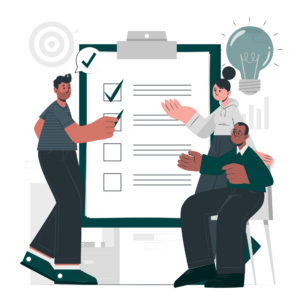
The following instructional techniques can be used to engage multilingual learners in the English language classroom. These techniques are aligned with the English Language Proficiency Standards and the College and Career Readiness Standards and most of them engage learners in all four language modalities: speaking, listening, reading, and writing.
Each technique has an explanation of how it works in the classroom as well as differentiation strategies for varying levels of proficiency and variation activities.
The techniques Brainstorm to Think Pair Share work best in classroom settings. The techniques Categorize to Video work in both classroom and tutoring settings.
For more information and support on implementation of these activities, please see the ESOL Featured Resources as well as VALRC’s event calendar and professional development opportunities.
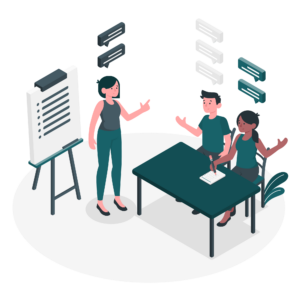
How it works:
Elicit information from learners about a given topic. This activity helps to show what the learners already know and allows them to contribute to the class. It can also be used for a post assessment. Good for using as a pre-writing, pre-listening, or pre-reading activity.
Beginner Levels: Model and supply a few ideas to get the activity started.
Intermediate and Advanced levels: Give learners time to generate their ideas. Record answers on the board or assign a learner to do that task.
Variations:
- This can be a whole-class or small group activity.
- The information generated from this activity can be sorted, categorized, etc. in follow-up activities.
- This can be an effective strategy for generating vocabulary words (student-generated text).
- The paper can rotate or the groups can rotate. This can be done in groups, pairs, or individuals.
- Progressive-Brainstorming: For this variation, the instructor asks learners to make a list or respond to a specific prompt. After learners jot down their ideas, the instructor asks learners to pass their paper to the next group or learner. The process is repeated until the paper is returned to its owner. The owner(s) look(s) at all the additions and reflect(s) in an appropriate manner.

How it works:
Give learners topics to debate conflicting points of view. Learners research and organize different sides of an argument and present and defend their positions.
Beginner Levels: Provide scaffolds for the debate process, such as providing learners with different sides of an argument and points that support each side. Also, use scenarios that are less complex and familiar to learners, such as online versus in-person shopping.
Intermediate and advanced levels: Give learners more control of the process. They can identify topics for the debate, sides of the argument, and points to support each side. They can also appoint roles to themselves and each other.
Variations:
- This can be done in two groups, with each group presenting a different side.
- Arranges learners into two groups to discuss and prepare for the debate. In the prep group, students will discuss what their position is, brainstorm what to say to defend their position, and guess what arguments the other side will bring so they will be prepared. Then in pairs, one learner from each group debates.
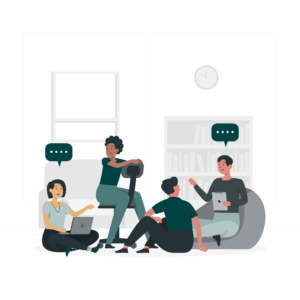
How it works:
Present a topic to be discussed openly by the whole class. This topic can be general or specific. Usually some pre-work can be done to bring out vocabulary and context.
Variations:
- Small group work: learners discuss a topic together, notes are taken, and then they share their conclusions with the rest of the class. In small groups, each learner could have a role, e.g. leader, recorder, timekeeper, etc.
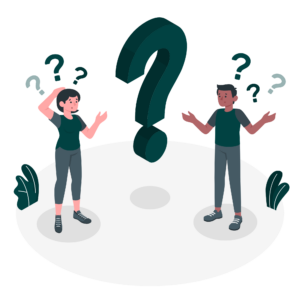
How it works:
Ask learners to find other members of the class who have had a specific experience related to the lesson topic. For example, in a lesson on sociocultural practices in the workplace, use statements like, “Find someone who has attended an office party. Find someone who has received an award at work. Find someone who has signed a condolence card at work." Learners walk around the room and write the name of the learner(s) who have had the experience. They should continue circulating to complete asking the questions and matching a learner to each experience.
This is similar to an Information Grid but questions are listed on the page with a line to write in the name of the learner who has had the experience.
Beginner Levels: Provide learners with the whole questions to ask and/or provide sentence stems to scaffold how to respond to the questions. Also, add images to the handout with the questions to help scaffold the meaning of each question. Additionally, possibly provide learners with a list of the names of all the learners in the classroom. They can use this list to copy names or even check off which learners match with each question. This places the focus on the use of verbal language skills and removes barriers for those developing their literacy skills.
Intermediate and Advanced Levels: Ask learners to write the questions for the activity. Ask learners to report back to the whole class which of their classmates has had the various experiences. Ask learners to elaborate on their experiences by sharing information or stories with the class.
Variations:
- This can also be used as a ‘Getting to Know You’ activity with general questions about a person’s experiences.
- This can also be used to practice the present perfect verb tense. For example, "Find someone who has lived in 3 or more countries."
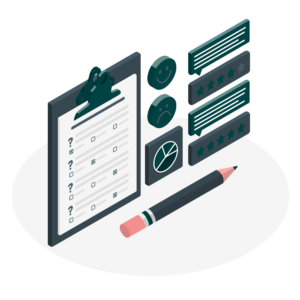
How it works:
Group polling is a way to gather information and opinions from the class. It allows students to see trends and gain a better understanding of their classroom community. Polling is good for student needs assessment, or eliciting opinions on complicated topics. Learners can interview each other using info grids or single questions, then collect the data together.
Beginner Levels: Limit the number of questions, provide familiar questions, and use fact-based questions. Another possibility is to use yes/no or true/false questions. Additionally, colored cards can be used to represent responses. For example, green for yes and red for no.
Intermediate and Advanced Levels: Ask learners to generate their own questions. Use opinion questions and allow learners to generate their own responses instead of selecting from provided options.
Variations:
- Simple polls can be done by a show of hands, or by using free polling software, such as PollEverywhere, Mentimeter, or Google Forms. For an example, see this short video on polling with cell phones produced by REEP. This is an example of polling using a Google Form. For this example, learners are asked to indicate their opinions about different types of weather.
- After group polling, it can be valuable to examine the data that has been collected and organize it into a chart or graph. Once the data has been organized, you can practice using language frames to talk about it (e.g. Most people…, some people, half the class, etc.) Learners can then put the results into a narrative form, either written or spoken.
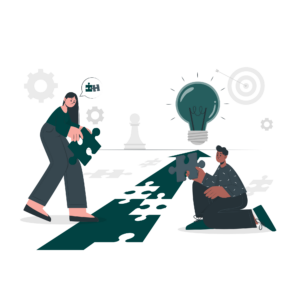
How it works:
A group problem solving activity allows learners to practice the skills of persuading, compromising, agreeing, and disagreeing.
Steps:
-
-
-
-
-
-
-
-
- Present a problem or situation and provide some possible choices or solutions.
- Have learners work in small groups to come to consensus about which solutions/choices are the best.
- Ask each group to present its decision and reasoning to the whole class.
-
-
-
-
-
-
-
Beginner Levels: Use visuals to scaffold the problem or situation. Use a whole group approach - explain the choices or solutions verbally with visuals and ask learners to raise their hand for their selected choice.
Intermediate and Advanced Levels: To increase the rigor of the activity, ask learners to generate their own choices or solutions, or to rank choices or solutions and explain their reasoning.
Variations:
- Use this activity to practice conditionals (If... then...).
- Organize a debate based on the choices or solutions selected by the learners.
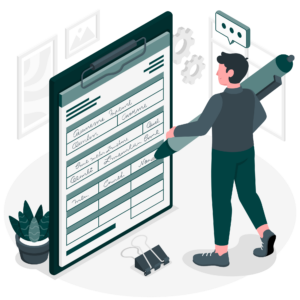
How it works:
An information gap activity allows learners to practice asking and answering questions. It provides an authentic reason for communication as learners are forced to understand each other and to make themselves
understood in order to complete a task. In an information gap activity, learners have different sets of information. They must share their information which is incomplete with a partner in order to complete a task.
Steps:
-
-
-
-
-
-
-
-
- Prepare a primary handout that can be used to delete different pieces of information on two sets of handouts. Handout "A" will have some information deleted that handout "B"will provide. Handout "B" will have some other pieces of information deleted that handout "A" will provide.
- Divide the class in pairs, one learner with "A" and the other with "B". Learners must ask partner questions to get information necessary to fill in missing information.
-
-
-
-
-
-
-
For example, when setting up an interview, one learner can be a job seeker and the other a receptionist setting up the appointment. Give the job seeker a sheet with their personal weekly schedule and give the receptionist a sheet with appointment slots.
Beginner Levels: Use images instead of text and limit the amount of information required to complete a task.
Variations:
- Use authentic materials--community college class catalogue, schedule of job seeker workshops offered by local employment center, etc.
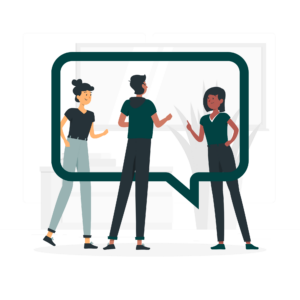
How it works:
Information grids are a structured way for learners to gather information from each other and practice asking and answering questions.
Steps:
-
-
-
-
-
-
-
-
- Practice the questions that learners will ask each other.
- Provide a grid with the questions in the boxes across the top and the same number of rows as the number of people you’d like learners to “interview.” The question boxes can contain complete questions or cue phrases depending on the learners’ level and purpose of the activity. You can also ask learners to fill in the questions themselves after going over them as a whole group.
- Model asking the questions and writing down the responses with a learner.
- Learners interview each other and record answers.
- Depending on the class size, results can be tabulated on a grid on the board or tallied orally. In some cases, you can use the information collected to create a chart or graph to represent the data
-
-
-
-
-
-
-
To get a visual understanding of an information grid, see this example from REEP.
Beginner Levels: Limit the number of questions asked and the number of people to interview, provide picture prompts for the questions, provide sentence stems for response, allow learners to circle responses instead of writing them,
Intermediate and Advanced Levels: Ask learners to create their own questions, to respond using complete sentences, and to write down responses in complete sentences.

How it works:
A listening jigsaw is very similar to a reading jigsaw, just substitute listening passages or video clips for reading passages. The main idea is that learners first work in homogenous (likeability/interest) groups to gather information that is delivered at their skill level or their area of interest. Next, they get into heterogeneous (cross-ability/interest) groups to share what they’ve learned and work together to solve a problem or complete a task. This is an activity that focuses on fluency, as learners share their information and negotiate to complete the task.
Listening Jigsaws can be simple and quick, requiring very little preparation. You can also spend a little extra time for a more complex activity. Here are three examples.
- Recording your own:
- Record 2-4 dialogues using a smartphone, a web service like Vocaroo, or using software like Audacity. Share the audio file in PowerPoint, on a wiki page, or in a Google Doc. It can be helpful to pair the audio with a picture.
- Learners listen to one of the dialogues, take notes and/or answer comprehension questions then bring the info from their dialogue to a mixed group. The mixed group uses the information from each member to solve a problem, make a decision, or complete a task.
- Using multiple video clips:
- Find 2-4 video clips.
- Learners watch one of the clips, take notes and/or answer comprehension questions, then bring the info to a mixed group.
- The mixed group uses the information from each member to solve a problem, make a decision, or complete a task.
- Using pre-recorded audio or video:
- Play one dialogue, listening passage, or video clip in the classroom.
- Assign different groups to listen only for specific information. Learners listen for their assigned info, then bring that info to mixed group.
- The mixed group uses the information from each member to solve a problem, make a decision, or complete a task.
Beginner Levels: Assign shorter chunks of audio, limit the information learners are looking for, or slow the audio down. Also, present learners with images to scaffold the situation or information presented in the audio.
Intermediate and Advanced Levels: Ask learners to answer questions versus fill in a blank or chart with information. Ask learners to report back, summarize, or synthesize the information they were listening for in their own words.
Variations:
- A good way to get multiple dialogues at multiple levels is to choose an already published dialogue of medium difficulty for your class. Then modify it for varying levels of difficulty. Assign groups audio according to their proficiency level.

How it works:
A text is split into multiple sections. Learners are assigned in groups to work on reading different sections and to become an “expert” on that section. They may answer comprehension questions and take notes about their section. The experts from each group meet with each other in heterogeneous, or mixed, groups to share what they learned and use their combined knowledge to complete a task.
Beginner Levels: Provide shorter text with level appropriate sentence structure, grammar, and vocabulary. It may be necessary to adapt the section of the reading provided to these learners. Provide textual support such as images, glossaries, and headings. If the class is multilevel in nature, provide more scaffolding and modeling to this group while allowing the more developed proficiency levels space to read and work independently.
Intermediate and Advanced Levels: Give learners a specific topic or question to answer and research the answer, then report back in jigsaw format.
Variations:
- Rather than one text split into multiple sections, groups could each be given a different text on the same topic. This technique may be more effective for a multilevel classroom.
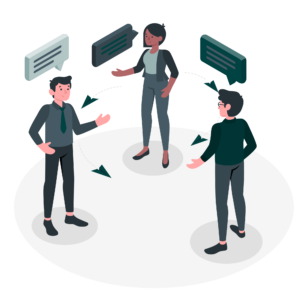
How it works:
This activity gives learners the opportunity to practice short dialogues over and over again with different partners. It also encourages peer teaching.
Steps:
-
-
-
-
-
-
-
-
- Learners form two lines facing each other.
- Learners in LINE A have cue cards. These cue cards are used to elicit responses from learners in LINE B.
- LINE A remains stationary, repeating the same questions while LINE B looks at cue cards, responds, and moves right. The last person moves to the beginning of the line.
- Continue until everyone in LINE B has responded to everyone in LINE A. All pairs are talking at the same time.
- LINE A gives cue cards to whomever is opposite in LINE B. Repeat the procedure.
-
-
-
-
-
-
-
For an example, see this short video on line dialogues produced by REEP.
Beginner Levels: Use images on the cue cards next to or instead of text. Provide the complete question and sentence stem for responses. Ask simple questions such as yes/no or those that only require a one-word answer.
Intermediate and Advanced Levels: Ask learners to form their own questions/responses or to write down their classmates' responses. Use complex questions that are open-ended.
Variations:
- This activity can be used along with group polling where learners are polling each other for information during the line dialogue. Additionally, learners can use the information from this activity to create full sentences explaining the results or graphs/charts.
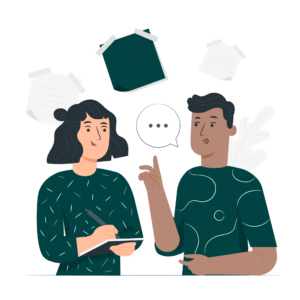
How it works:
Peer Dictation is a partner activity in which one learner reads an assigned passage aloud while the other learner writes it down. There are many different ways to structure this type of activity, but peer dictation activities can be adapted to all levels, and require learners to practice all four language skills: reading, writing, listening, and speaking.
Be sure that the learners have reviewed the relevant vocabulary and grammar structures sufficiently before attempting this activity. If the content is not meaningful to the learners, this will be very difficult.
Beginner Levels: Focus on sharing of basic identification information like the spelling of names, phone numbers, addresses, or email addresses. Instead of using text, ask learners to manipulate realia or images based on verbal demands.
Intermediate and Advanced Levels: Ask learners to dictate more complex texts with a variety of sentence and paragraph lengths and structures.
Variations:
- Straight sentence dictation:
- Give Learner A a list of sentences specific to the current unit. Give Learner B a sheet of blank spaces for each of Learner A’s sentences.
- Learner A reads the sentences to Learner B, who writes the information down in the blank spaces.
- Partners switch roles.
- Afterward, partners correct each other’s’ new sentences.
- The Messenger and the Scribe:
- Tape a short text to the wall board in the classroom. Text can range from simple sentences to multi -paragraph readings depending on the level.
- Divide the class into pairs, and designate one member of each pair the “scribe”, and the other member of the pair the “messenger.”
- The messenger will walk to the wall/board and read the first bit of text. The messenger will return to his/her partner, and dictate that portion of the text to the scribe from memory, who will record it on a piece of paper. The messenger may help with spelling, etc, but he/she cannot take the pen or pencil from the scribe.
- The messenger will continue to go to the board memorizing pieces of the text to dictate back to the scribe until the scribe has rewritten the entire text. The learners can also switch roles at some point so that both of them are able to complete both the scribe and messenger tasks.
- Once the activity is over, learners can compare their story to the text from the board to check for mistakes.
- Different Forms of the Same Paragraph (Cloze Activity):
- Learner A and Learner B are each given a paragraph with different words, partial or whole sentences missing. Together, their hand-outs create one complete paragraph.
- If Version A is the hand-out containing the first words of the paragraph, instruct learners with Version A to start. Learner A will read while Learner B fills in the missing information from their
hand -out. As soon as Learner A reaches a point of missing information, Learner B will continue dictating their portion of the sentence or paragraph while Learner A writes down the missing words. This process will go on until each learner has the same completed paragraph. - Once the activity is over, Partners A and B engage in peer correction and discuss the paragraph as a whole.
- Different Paragraphs of a Story (Cloze Activity):
- Learner A and Learner B are each given a different hand-out. Version A has a complete first paragraph, and an incomplete second paragraph. Version B has an incomplete first paragraph, but a second paragraph.
- Learner A reads the first paragraph aloud to Learner B, who fills in the missing information from the first paragraph. Learner B then reads the second paragraph aloud to Learner A, who fills in the missing information from the second paragraph. By the end, each learner should have a complete story.
- Learners can compare sheets to check for any mistakes, discuss the story as a whole, and answer comprehension questions.
- Picture Dictation (Beginner Levels):
- Give Learner A a handout with picture, for example a person or a face).
- Give Learner B a handout with a list of commands.
- Learner B reads the commands and Learner A performs the command. For example, Learner B can tell Learner A to, “Put an x on the elbow. Circle one foot.”
- Learner B checks Learner A’s picture for accuracy.

How it works:
Give learners a question, problem, picture, or agree/disagree statement to ponder. Learners independently Think about it. Then learners Pair up with a peer and share with their partner. Each person prepares to share their partner’s ideas with the whole class. Share- Back in whole group, each learner introduces their partner and shares their thoughts.
This activity works well as a way to activate background knowledge during a warm up activity. It can also work as a culminating or follow up activity after reviewing a text or audio with information.
Variations:
- Think-Pair-Share-Square: Have pairs work with a second pair (quads) rather than the whole class on the share portion of the activity.
- Think- Pair- Create- Share: As pairs share, have them note similarities and differences, and then create a new answer that incorporates the best of each person’s ideas.

How it works:
Categorizing helps learners understand the data in a more academic way. First, model how to sort with something familiar such as clothing that can be sorted by color, formal/informal, what season/weather you would wear it, etc.
Beginner Levels: Assign categories and help learners sort and put data into those categories. For example, if working on alphabetics, ask learners to sort letters into groups based on whether they are capitalized or not or into groups of vowels or consonants.
Intermediate and Advanced Levels: Ask learners to create categories. For example, if working on a unit about the community, learners can sort local businesses into categories that they create.
Variations:
- Learners sort visuals or realia into categories. For example, when working on a unit about food, learners sort images of vegetables and fruit into the appropriate categories.
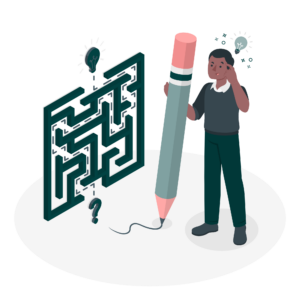
How it works:
Give learners a text with missing words (classic cloze activity has every seventh word missing) and learners insert missing words into the text. This activity is often used for vocabulary and grammar instruction/practice.
Beginner Levels: Ask learners to select from a word bank or have them insert very few words. Sometimes, they only need to fill in letters.
Intermediate and Advanced Levels: Ask learners to create their own cloze activities for other learners or groups to complete. They can leave out targeted vocabulary assigned by the instructor or choose which words are left out on their own.

How it works:
Provide learners with a framework or way to organize data so that they learn about a concept by comparing (and / or contrasting) it to something else. This activity is often done with the scaffold of a graphic organizer.
This Jamboard shows an example compare/contrast activity for the English language classroom using a graphic organizer. Please note that Jamboard has been discontinued. This article presents some alternative options for creating a similar activity for a virtual space.
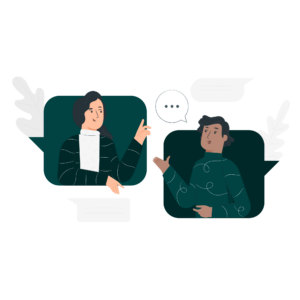
How it works:
Have learners practice a scripted dialogue. Repeated practice can be achieved through a variety of steps, gradually moving learners towards using the dialogue independently.
Steps:
-
-
-
-
-
-
-
-
- Have learners close their eyes and listen while the teacher reads the dialogue.
- Learners follow along as the instructor reads it.
- Learners listen and repeat line by line.
- Then the instructor takes role A, all the learners take role B. Then switch roles.
- Then half the class is A, the other half is B; then switch roles.
- Then students practice in pairs.
-
-
-
-
-
-
-
Variations:
- Strategies for extension/differentiation activities including learners writing out the dialogue and learners identifying alternative ways for saying the same thing.
- Rather than using a published dialogue, ask learners to generate a dialogue at their own level using
pictures and gestures. (This is essentially using the language experience approach to elicit a dialogue instead of a story.)
-
- Choose a situation relevant to the topic being studied and defines the roles involved.
- Instead of presenting a prepared dialogue, use pictures and gestures to elicit the
dialogue from the class. - Accept all suggestions from the learners and encourages them to work together to provide the correct target language. Teacher takes one role, and the class takes the other role to elicit the entire dialogue.
- Repeat the dialogue with each half of the class taking on one of the roles.
- Provide handouts of the pictures for pair work with the dialogue.
-

How it works:
Field trips involve visiting locations to bring classroom learning to life. Examples of field trips include libraries, Skill Source Center, or the local hospital.
Prepare learners for the trip so that they have a learning purpose. This includes giving them background context, vocabulary, things to look for, etc. Afterwards continue the learning by drawing on the field trip experience. Be sure to take pictures, or have students take pictures to use in follow-up lessons.
Beginner Levels: Find a translator or ESOL friendly tour guide. Provide learners with scaffolds like graphic organizers and pictures to help learners participate in and later recall the field trip.
Intermediate and Advanced Levels: Learners can lead tours at locations that are familiar to them.
Variations:
- Field trips can also be virtual or can be walking around a neighborhood or relevant location.
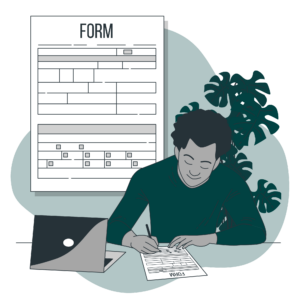
How it Works:
Use a real-life form (e.g. job application, medical history form, rental application, credit card application) or create a simplified version. Demonstrate using your own information or invented information from a model. Provide opportunities for students to practice filling in the form using their own information or model information (for sensitive or personal topics).
Beginner Levels: Use streamlined forms and/or provide forms with some of the information already filled in order to scaffold.
Variations:
- Provide opportunities for students to practice with both paper and electronic forms. Allow students to practice on a paper form before filling out an electronic version.

How it works:
After introducing vocabulary, encourage learners to create flashcards for identified key lesson vocabulary or for vocabulary that they identify as important.
Beginner Levels: Instead of including a definition on one side of the flashcard, learners can add an image or draw a picture.
Intermediate and Advanced Levels: Flashcards can include additional information beyond a simple
definition of the word. Additional information could include: pronunciation, collocations, part of speech, synonyms/antonyms, connotations, word family.
Variations:
- Learners can use flashcards to quiz themselves or they can use them with a partner.
- Quizlet is an online flashcard creator that can be used to make new flashcards or use flashcards that have already been created by others.

How it works:
Focused listening activities give learners an opportunity to practice listening to speech in authentic situations.
-
-
-
-
-
-
-
-
- Select materials that simulate real life situations (e.g. weather forecasts, traffic announcements, conversations, etc.).
- Prepare learners for the material they will hear by describing the situation and speakers or by showing images or videos related to the situation.
- Provide exercises that require learners to listen for specific information (e.g. cause of a delay, a changed gate number, the estimated delay time, tomorrow’s weather forecast, etc.)
- Provide clues to help learners understand.
- Check comprehension.
- Provide multiple opportunities to listen to the same passage.
- Provide a chart or grid that learners need to fill out with them information listened to.
- Provide feedback.
-
-
-
-
-
-
-
Beginner Levels: Consider varying the length of the audio, chunking the audio into sections, or limiting the number of speakers or information to listen for. Additionally, consider providing visual scaffolds to support comprehension of the audio.
Intermediate and Advanced Levels: Ask learners to interact with the content from the listening by reporting back, summarizing, or synthesizing the information they heard or making an inference based on the information.

How it works:
Graphing is a way to visually represent data. Provide the resources and models as appropriate different ways to represent data using a graph. For example, using graphing paper, learners could create a simple graph (x and y axis) and identify points for given data.
Variations:
- Create any type of graph (bar graphs, pie chart) depending on the type of data and appropriate way to represent it.
- Could use pen and paper, MS Word or Excel, Google Docs or Spreadsheets.
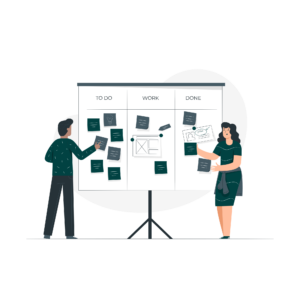
How it works:
Provide graphic models to help learners organize information. Graphic organizers can be used for a
variety of purposes during different stages of a lesson. For example,
-
-
-
-
-
-
-
-
- brainstorming
- comparison/contrast
- hierarchy
- cause/effect
- sequencing
-
-
-
-
-
-
-
Some graphic organizers are commonly associated with a particular stage of a lesson. For example, mind maps can be used as a prewriting activity to help students organize their thoughts or during the building background stage to elicit what students already know about a topic in a brainstorming activity. Venn diagrams or T charts can be used as a post reading activity as a tool to analyze the text. It is important to provide explicit instruction and model how to use each type of graphic organizer.
This resource provides websites that have graphic organizer templates.
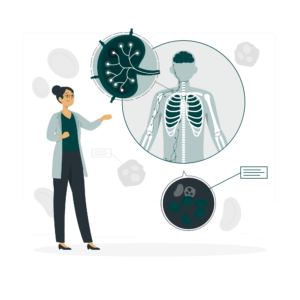
How it works:
Given a picture or diagram, learners label it. This can be done individually, or collaboratively in pairs or small groups. It can be used to assess learners' prior knowledge, apply, or assess what they have learned. Ex. Labeling body parts, signs, tools or equipment, maps.
Beginner Levels: Provide learners with a word bank for the parts that they are being asked to label. Limit the number of parts learners need to label. Allow learners to respond verbally with the labels and then write them down.
Intermediate and Advanced Levels: Ask learners to provide the vocabulary for labeling various parts instead of providing a word bank. Increase the complexity of what learners are being asked to label.

How it works:
The language experience approach (LEA) is a whole language approach that promotes reading and writing through the use of personal experiences and verbal language. It can be used in tutorial or classroom settings with homogeneous or heterogeneous groups of learners. Beginning literacy learners relate their experiences to a instructor or aide, who transcribes them. These transcriptions are then used as the basis for other reading and writing activities. The LEA is as diverse in practice as its practitioners. Nonetheless, some characteristics remain consistent:
-
-
-
-
-
-
-
-
-
- Materials are learner-generated.
- All communication skills-- reading, writing, listening, and speaking--are integrated.
- Difficulty of vocabulary and grammar are determined by the learners own language use.
- Learning and teaching are personalized, communicative, creative.
-
-
-
-
-
-
-
-
The most basic form of the LEA is the simple transcription of an individual learner's or group’s personal experience. Sit with the learners so that they can see what is being written. The session begins with a conversation, which might be prompted by a picture, a topic the learner is interested in, a reading text, or an event the learner has participated in. Once a topic evolves, the learner gives a verbal account of a personal experience related to that topic. The transcriber may help the learner expand or focus the account by asking questions. (From CAL.org/CAELA)
More information on and examples of the LEA, including videos, can be found by accessing this resource.
Beginner Levels: Learners will only report their experience using verbal language. Once the instructor has transcribed the text, it can be used for literacy activities that are level appropriate such as focusing on repeated phonemes for alphabetics practice or asking learners to copy the text to work on developing writing and sound/symbol correspondence. Learners can also engage with the text via comprehension activities.
Intermediate and Advanced Levels: Arrange learners in pairs or small groups and ask them to transcribe each other's experiences. Extension activities for these levels include using the text to compare and contrast similar experiences, responding to comprehension questions (ask learners to write their own), or using the text for a grammar correction activity.
Variations:
- Choosing the experience or stimulus: In collaboration with the learners, choose a prompt or activity that can be discussed and written up in some form. This might include pictures, movies, videotapes, songs, books or articles, class projects, field trips, holidays or celebrations, or an activity designed for this purpose.
- Organizing the activity: Develop a plan of action with the class. This might include what you will do and when, and what you will need. The plans can be written on the board to provide the first link between the activity itself and the written word.
- Conducting the experience: The following activities might be done in the classroom or in the community. For example:
- Preparing food (sandwich, French toast, salad, popcorn)
- Making cards (thank you notes, get well cards, holiday cards)
- Class projects (simulations, bulletin boards, skits)

How it works:
Lists can be used to generate vocabulary that learners already know related to a topic. Lists can be generated individually or in small groups. Facilitate how the learners generate information that fits a particular activity or category on which they must focus. This activity can be used in conjunction with brainstorming and/or categorizing.
Beginner Levels: Lists can be pictures. Ask learners to generate a list of words based on the initial letter or sound.
Intermediate and Advanced Levels: Lists can be words or connected text. Ask learners to list items according to importance or other criteria.
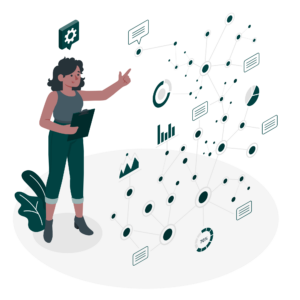
How it works:
These are any kind of creative activities that aim to help beginning language learners understand abstract concepts or understand that an image or word represents a real thing. It often involves hands-on activities and incorporates a variety of learning styles- auditory, visual, kinesthetic.
This kind of activity can take many forms. An example might be for the instructor to pantomime a concept. Another example might be setting up a series of subway and bus stops in the room and demonstrating the concept of using a transfer slip to go from one bus line to another or from subway to bus. Or showing how germs spread by putting glue and glitter on a pencil and passing it around.

How it works:
Matching is an activity that helps reinforce vocabulary or other language learning. For example, learners match definitions and words or examples; they match questions with answers; they match pictures and words. To facilitate a matching activity, pass out strips, one per person, and direct learners to find another learner with a matching strip. This activity can also be one with small groups or pairs.
Beginner Levels: Use images for the matching activity as well as vocabulary that is known or familiar to learners.
Intermediate and Advanced Levels: Make the matching activity more complex and possibly use new vocabulary or concepts that allow learners to apply previously learned materials to make judgements based on context.

How it works:
Presentations are a way for learners to demonstrate knowledge, practice academic/workplace communication skills, and gain confidence. Provide parameters for the presentation, model what is expected of the learners, provide a criteria for assessment, and give guidance for the audience. Learners present a topic to the class using multi-modal techniques.
Beginner Levels: Ask learners to talk about a picture or item from home. Give learners a short amount of time to speak. Use small groups for presentations instead of having to present to the whole class.
Intermediate and Advanced Levels: Ask learners to research a topic for a presentation. Ask learners to utilize a PowerPoint or Google Slides deck as a written component to the verbal presentation.
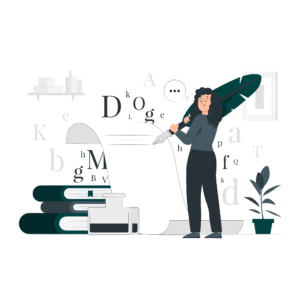
How it works:
Process writing is a technique to help learners create a written product that can be shared.
Steps:
-
-
-
-
-
-
-
-
- prewrite: activities such as brainstorming, organizing ideas, discussion
- create outline
- create draft
- peer review
- edit and revise
- finalize and publish
-
-
-
-
-
-
-
Plan activities that guide learners through each stage of the process.
Beginner Levels: Ask learners to create picture stories to share verbally with the class.
Intermediate and Advanced Levels: Learners should create a connected text such as a paragraph, essay, story, etc.
Variations:
- Options for publishing learner work include creating a class book (physical or virtual), creating a class website, posting on a bulletin board, and/or submitting to a learner work publication (Spotlight or The Change Agent)
How it works:
Ranking is a way for learners to prioritize or show relationships between words or concepts. Direct students individually, in pairs, or small groups, to rank concepts or words according to a given criteria.
Beginner Levels: Learners can rank images then verbally discuss their opinions.
Intermediate and Advanced Levels: Ask learners to explain their choices using complex sentence structures. Use this as a prewriting activity or brainstorm for a debate activity.
Variations:
- Ask learners to use online polls, such as Mentimeter and Poll Everywhere, to rank items.

How it works:
Using realia is an effective way to teach vocabulary, especially at beginner levels, but it can be used at any level. Realia appeals to different learning styles as learners can see and touch the item. Bring or direct learners to bring everyday items to class to teach and practice vocabulary. Hold up/point to an item and provides the name of the item. Provide practice activities and refer to the item throughout the lesson to reinforce learning.
Variations:
- Bring in a variety of realia items (or pictures), each numbered. In small groups, learners try to determine a variety of things about each piece (i.e. what the item is called, what it is used for, how many people in
their group own one or have used one before,). Learners can discuss orally, or discuss and write down the information. As a whole group, review items to clear up any confusions. - Put an item in a bag. Learner reaches in the bag to feel the item and guess what it is.
How it works:
Recording is a way to receive feedback and for students to develop meta awareness skills. Teacher records learners (or has them record each other). Learners then watch and self-assess their language skills.
This can be used as a practice before an oral presentation, for role plays, to practice pronunciation, etc. You can record audio or video using cell phones or ScreenPal on the computer, or use Google Voice for audio recording.
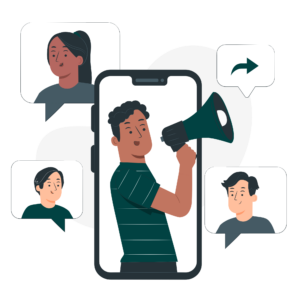
How it works:
Repetition is extremely important for mastery of new vocabulary. Learners can listen to the teacher model, and then repeat. Later Learners can recall vocabulary in pairs or small groups using picture dictionaries, worksheets, or flashcards. Repeating can be used with Total Physical Response.
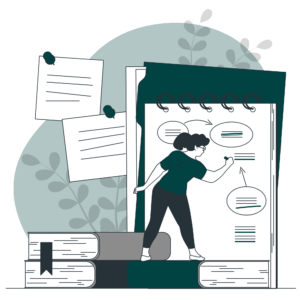
How it works:
Provide resources and parameters for learners to locate and synthesize information on a given topic. Provide sufficient detail and a clear purpose so that learners stay focused on their topic. Research typically culminates in a project such as a presentation, written report, portfolio, or finished product.
Beginner Levels: Learners use research skills to gather information from within the classroom by looking for information in the class that the teacher has set up or by interviewing each other. Provide learners with materials to look through to gather information.
Intermediate and Advanced Levels: Allow learners to select their own topics given the project details. Learners research authentic materials and look for research information and materials on their own.

How it works:
Learners write for a specific purpose or on a topic. Then papers are exchanged, and learners respond to the other student’s writing. Roles can be assigned, for example employee writing to ask for time off and supervisor responding.
Beginner Levels: Learners can record audio responses as an alternative to written text.
Variations:
- Email or text: Learners write and respond via email or text. WhatsApp is a mobile phone application that multilingual learners are usually familiar with and can be used for this purpose.
- Dialogue journal: Peers or the instructor/learner write back and forth in an ongoing written dialogue.
- Progressive Story: Instructors hand out papers that could have a photo or an initial phrase/sentence. Each learner writes something about the photo or phrase and then passes it on to the next student who continues the story or adds information. This continues until everyone in a group has contributed. Various stories can be created at the same time.
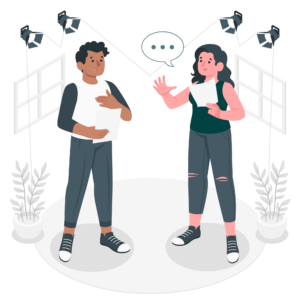
How it works:
Role plays can be used to practice speaking and listening skills within real contexts and encourage spontaneous speech.
Steps:
-
-
-
-
-
-
-
-
- Put learners in pairs. Assign each learner a role and provide them with a cue card.
- Learners carry on their conversations in their own words using the ideas on their cue cards.
-
-
-
-
-
-
-
Cue cards should include the learner’s role and their objective for the conversation. For example,
-
-
-
-
-
-
-
-
- Cue Card #1: You have been working at a grocery store for one year. You are asking your boss for a pay raise.
- Cue Card #2: You are the supervisor at a grocery store.
-
-
-
-
-
-
-
Role plays are used after students have had extensive practice with the vocabulary through dialogues and other activities.
Beginner Levels: Provide images on the cue cards as well as sentence stems for learners to use in the dialogue.
Intermediate and Advanced Levels: Do not provide cue cards only explain the scenarios.
Variations:
- Ask learners to record their role plays and have learners give each other feedback.
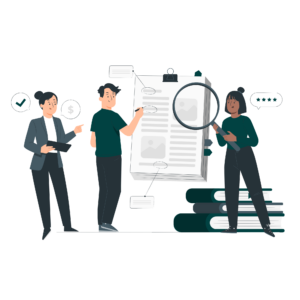
How it works:
Task learners with finding specific information in a text or to get the gist of the text. Skimming and scanning involves looking for information rather than reading for comprehension. This can be adapted to different levels by increasing the lexile level of the text.
Beginner Levels: Ask learners to look for very specific, factual information. Provide learners with choices and ask them to select the correct information from the text. Provide a short text that uses the same language as the prompts that tell learners what information to look for in the reading.
Intermediate and Advanced Levels: Move from more concrete to more abstract information as proficiency levels increase. For example, at more advanced levels, you can ask questions about why something happened or how someone felt about what happened. This information may be more indirectly stated in the text.
Variations:
- Skim and scan can also be a pre-reading activity. For example, learners look for new vocabulary or other information to make predictions.
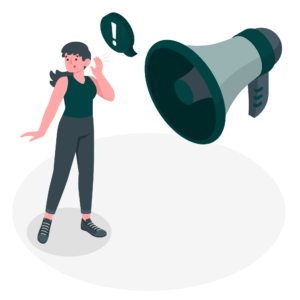
How it works:
Total Physical Response (TPR) is a technique in which the instructor says a word or gives a command, and learners respond physically. An example of TPR would be put your pencil under the table, beside your book, above your head. Or to review body parts- touch your elbow, knee, back, etc. Playing the game Simon Says is also an example of using TPR. This activity targets listening skills and allows the teacher to assess comprehension.
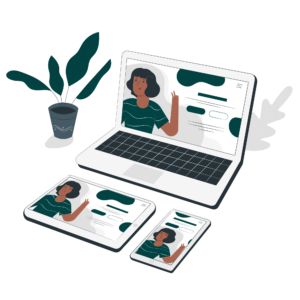
How it works:
Show a video and have learners do pre, while, and post activities. The "pre" activity should introduce the topic/context by drawing on learners’ past knowledge or experiences. Predicting activities are also appropriate. “While” activities are tasks performed while the learners are watching the video to help them focus on vocabulary, phrases, or ideas. “Post” activities extend and expand the learning.
Beginner Levels: Show a video without the sound or slow down the playback speed so that the audio is heard at a slower pace.
Intermediate and Advanced Levels: Play video both with and without captions. Ask learners to take notes while watching the video.
Variations:
- Sound off: Turn off the sound and learners must suggest what actors are saying (create the dialogues) or what is happening.
- Picture off, sound on: learners can hear the video, but not see what is happening. They can draw a picture of what is happening, decide who is speaking, guess the location, etc.